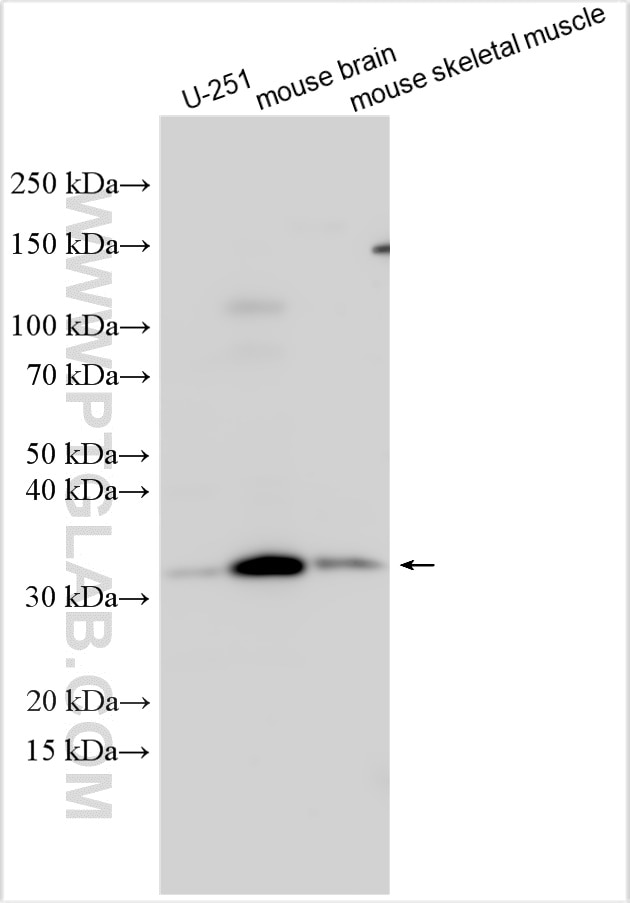Validation Data Gallery
Filter:
Tested Applications
| Positive WB detected in | U-251 cells, mouse brain tissue, mouse skeletal muscle tissue |
Recommended dilution
| Application | Dilution |
|---|---|
| Western Blot (WB) | WB : 1:2000-1:10000 |
| It is recommended that this reagent should be titrated in each testing system to obtain optimal results. | |
| Sample-dependent, Check data in validation data gallery. | |
Product Information
21884-1-AP targets PPTC7 in WB, ELISA applications and shows reactivity with human, mouse samples.
| Tested Reactivity | human, mouse |
| Host / Isotype | Rabbit / IgG |
| Class | Polyclonal |
| Type | Antibody |
| Immunogen | PPTC7 fusion protein Ag16469 相同性解析による交差性が予測される生物種 |
| Full Name | PTC7 protein phosphatase homolog (S. cerevisiae) |
| Calculated molecular weight | 304 aa, 33 kDa |
| Observed molecular weight | 32 kDa |
| GenBank accession number | BC111551 |
| Gene Symbol | PPTC7 |
| Gene ID (NCBI) | 160760 |
| RRID | AB_3669380 |
| Conjugate | Unconjugated |
| Form | Liquid |
| Purification Method | Antigen affinity purification |
| UNIPROT ID | Q8NI37 |
| Storage Buffer | PBS with 0.02% sodium azide and 50% glycerol{{ptg:BufferTemp}}7.3 |
| Storage Conditions | Store at -20°C. Stable for one year after shipment. Aliquoting is unnecessary for -20oC storage. |
Background Information
PPTC7 (Protein phosphatase PTC7 homolog, also named TAPP2C) is a resident mitochondrial phosphatase essential for maintaining proper mitochondrial content and function (PMID: 37833277).
Protocols
| Product Specific Protocols | |
|---|---|
| WB protocol for PPTC7 antibody 21884-1-AP | Download protocol |
| Standard Protocols | |
|---|---|
| Click here to view our Standard Protocols |
